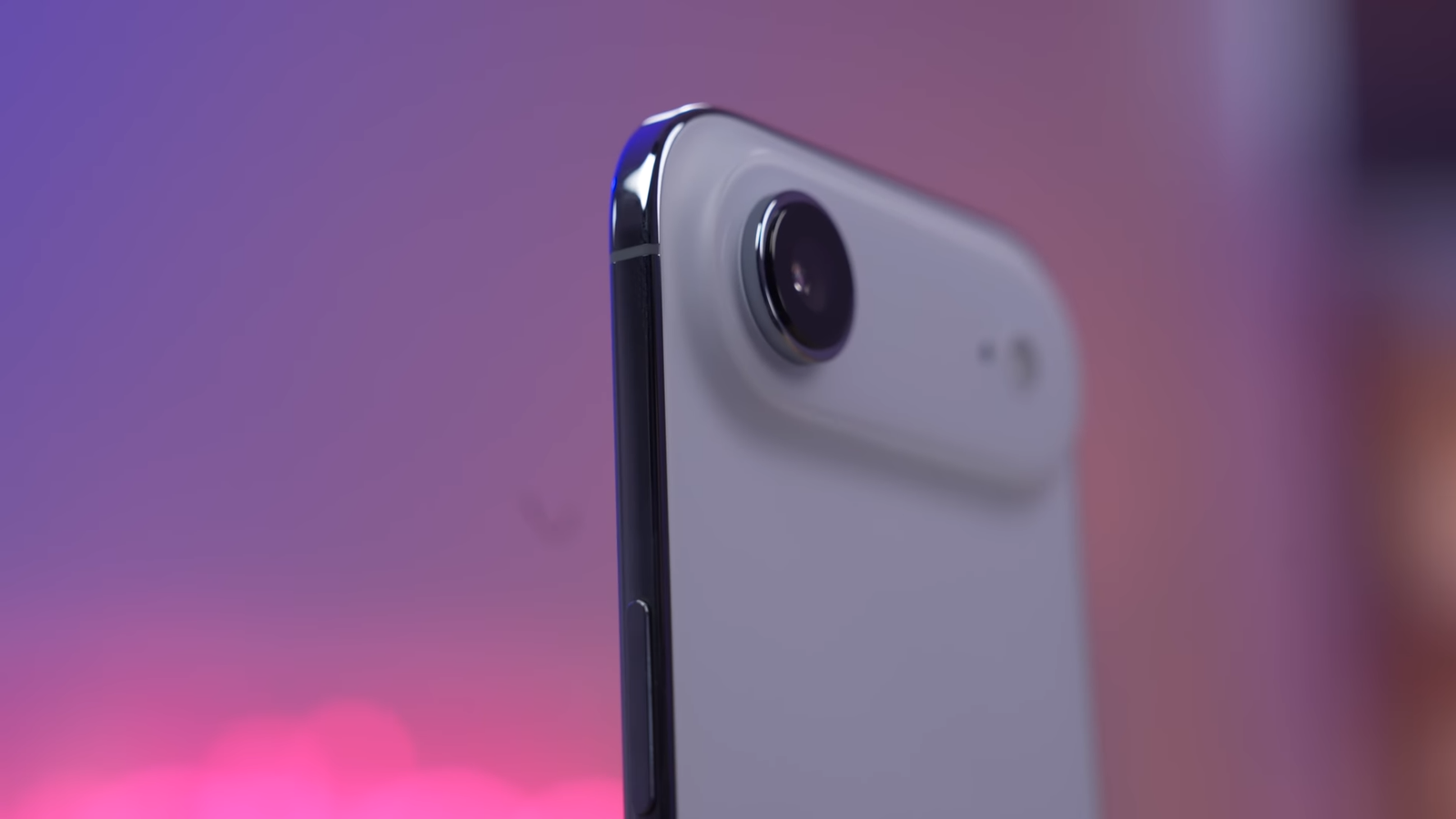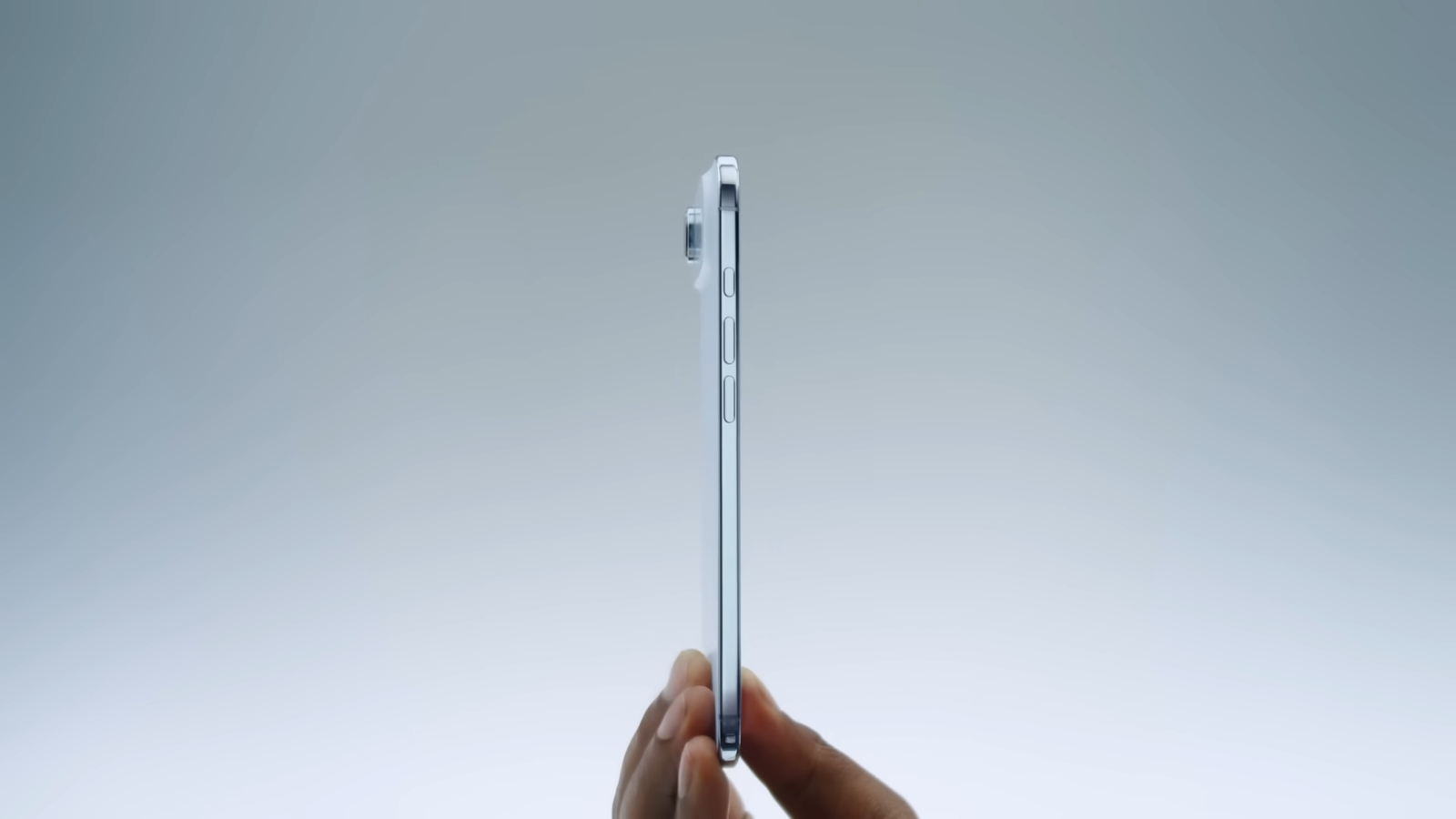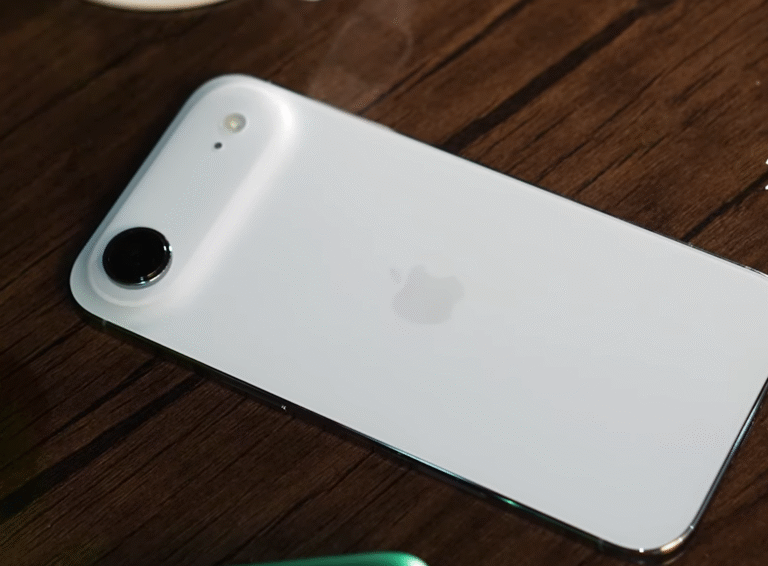
Apple has finally introduced something completely different from their usual lineup — the iPhone Air. Unlike the numbered iPhones we get every year, this is a brand-new model and concept. It’s not the iPhone 17 Air or part of the Pro lineup — it simply stands on its own as the first-generation “Air.”
Apple seems to be aiming for a new design category with the iPhone Air, focusing on extreme thinness and light weight, while still packing in powerful hardware. After using the phone and testing it in real-life conditions, here’s a deep dive into what makes the iPhone Air so unique, what it can and can’t do, and whether it’s worth your attention.
Ultra-Thin Design That Redefines iPhones
The very first thing you notice when picking up the iPhone Air is how unbelievably thin it is. When you hold it sideways, it practically disappears from view. It’s just 5.6 mm thin — about as thin as four or five stacked credit cards — and weighs only 165 grams, which is roughly the same as three AA batteries or a deck of playing cards.

Apple achieved this by 3D-printing titanium for the first time ever on an iPhone. The frame uses aerospace-grade Grade 5 titanium, while the back features a new precision-milled plateau to hold the camera, speaker, and Apple Silicon components. This smart internal layout allowed Apple to fit a large battery inside without adding thickness.
The front is protected by Ceramic Shield, and Apple says it’s three times more scratch resistant than previous glass. The back is also ceramic shielded and claimed to be four times more resistant to cracks compared to older models.
Despite the incredibly thin build, the phone feels solid and well-balanced. It’s so light that it almost feels unreal after using something as heavy as the iPhone 17 Pro Max. Switching between the two makes the Air feel like holding a piece of paper compared to a brick.
Compact Yet Gorgeous 6.5-Inch Display
Even with its ultra-slim body, the iPhone Air includes a 6.5-inch Super Retina XDR display. It supports ProMotion technology, which means it can go up to 120Hz refresh rate for smooth scrolling and gaming, and drop down to 1Hz for the always-on display to save battery.
Colors are bright, viewing angles are excellent, and the panel gets very bright outdoors. Watching videos, scrolling through social media, or playing games feels fluid and fast. Apple has managed to keep the visual quality of its Pro models in this tiny frame, which is impressive.

Simple Yet Powerful Cameras
Unlike the multi-lens setups on Pro models, the iPhone Air keeps things simple with one rear camera. It’s a 48MP Fusion main sensor that delivers 2x optical-quality zoom. There’s also a new 18MP front camera with Center Stage support, which keeps you in frame during video calls.
You can shoot at 1x or 2x, and tap to get a 35mm-equivalent field of view. There’s digital zoom up to 10x, although like most digital zoom, quality drops as you zoom further. It doesn’t have an ultra-wide or telephoto lens, and it also skips features like Cinematic mode, Spatial Video, and ProRes RAW recording.
Even with just one lens, the photo and video quality is sharp, colorful, and clean, thanks to Apple’s image processing. Portraits look clear, night shots are surprisingly good, and video goes up to 4K at 60fps.
If you’re someone who takes a lot of ultra-wide shots, you may miss that option. But if you mostly shoot everyday photos and videos, the main camera does a fantastic job.

Performance: Flagship Power in a Slim Body
Don’t let the size fool you — the iPhone Air runs on Apple’s latest A19 Pro chip, the same powerhouse inside the iPhone 17 Pro models. It has a 6-core CPU, 5-core GPU, and neural accelerators built into each GPU core to handle Apple Intelligence features and demanding tasks.
Gaming, video editing, and heavy multitasking run without lag or frame drops. Apple also added the new N1 wireless chip for Wi-Fi 7, Bluetooth 6, and Thread, plus a C1X modem that’s faster and more power efficient than last year. Everyday tasks like AirDrop, streaming, and hotspot sharing feel instant.
Despite its thinness, the phone stays cool during most tasks. There’s only one speaker (instead of stereo), so sound is a bit more directional, but still clear and loud for such a small device.

Battery Life and Charging
Battery life was one of the biggest concerns with such a thin phone — but Apple tackled this well. They redesigned the internal layout to prioritize battery volume, and combined it with the efficiency of the A19 Pro and iOS 26’s adaptive power mode.
Apple rates the iPhone Air at up to 27 hours of video playback, which is full-day battery life for most people. And for longer trips or busy days, Apple has made a new ultra-thin MagSafe battery pack designed specifically for the Air. It magnetically attaches to the back and blends perfectly with the slim body.
However, this battery pack only fits the iPhone Air and won’t work on other iPhones due to its thin size.
eSIM Only, With All the Buttons You Need
The iPhone Air is eSIM-only globally, meaning there’s no physical SIM slot. This is great for travelers: you can add a local plan digitally while keeping your main number active, without swapping SIM cards.
Even though the phone is so small, Apple still included the Action Button and a dedicated Camera Control button. You can set the Action Button to quickly trigger silent mode, launch the Translate app, or run a Shortcut. These small touches make the phone still feel like a full-featured flagship.
Colors, Storage, and Price
Apple offers the iPhone Air in four elegant colors:
-
Sky Blue
-
Cloud White (Silver)
-
Light Gold
-
Space Black
The colors are subtle and almost pastel-like — depending on lighting, the Sky Blue can look silver. It’s a clean, minimalist design that fits the Air’s identity.

Storage options include 256GB, 512GB, and 1TB, and it starts at $999.
Accessories: Protection Without the Bulk
Because the iPhone Air is so thin, it can feel slippery to hold. A case is highly recommended. For example, Dbrand has created a Tank Air case specifically for the iPhone Air. It’s rugged, industrial, and adds grip without adding much bulk.
It also works with MagSafe accessories like the slim MagSafe battery, and you can customize it with colored buttons. Pairing it with a Prism screen protector gives full protection while keeping the Air’s sleek look intact.
Real-World Use: Light, Fast, and Fun
In everyday use, the iPhone Air is incredibly fun to carry. It almost vanishes in your pocket or bag, and using it with one hand feels effortless. Scrolling is smooth, apps open instantly, and gaming performance is top-notch.
It’s especially great for people who want Pro-level performance without the bulk of a Pro Max-sized phone. The lightweight design makes it easy to hold during long video calls, and the Center Stage front camera keeps you framed automatically.
The only noticeable compromise is the single speaker, which makes audio sound more one-sided, and the lack of ultra-wide camera if you rely on that for photography.
Durability: Surprisingly Strong
Apple showed a stress test during its announcement, bending the iPhone Air with 130 pounds of force. It flexed slightly but returned to its shape afterward. The titanium frame and ceramic glass give confidence that this phone can survive everyday life, even with its ultra-thin body.
Of course, because it’s so slim, using a case is still wise for extra protection against drops or scratches.
Who Is the iPhone Air For?
The iPhone Air is perfect for:
-
People who want a thin, light phone without losing performance
-
Travelers who prefer eSIM only
-
Minimalists who don’t want bulky devices
-
Users who mainly use one camera and don’t need advanced photography features
-
Anyone who values comfort, portability, and sleek design over having multiple camera lenses or stereo speakers
It’s not for:
-
Heavy photographers who need ultra-wide and telephoto lenses
-
Audiophiles who want loud stereo speakers
-
People who prefer larger battery capacities than a slim design can offer
Final Thoughts: A Bold New Step from Apple
The iPhone Air is Apple’s boldest design experiment in years. It’s tiny, feather-light, and unbelievably thin, yet still incredibly powerful. The A19 Pro chip, long battery life, gorgeous display, and premium build make it a serious flagship phone — just in a much smaller body.
It does make a few compromises, like having only one rear camera, one speaker, and no ultra-wide lens. But those are sacrifices some people will gladly make for the comfort and portability this phone delivers.
If Apple continues refining this concept, the Air series could become the future of compact flagship phones. Right now, the iPhone Air stands as a statement piece — proof that powerful phones don’t have to be big and heavy anymore.
Specs at a Glance
| Feature | iPhone Air |
|---|---|
| Thickness | 5.6 mm |
| Weight | 165 g |
| Display | 6.5″ Super Retina XDR, 120Hz |
| Chip | A19 Pro |
| Cameras | 48MP rear, 18MP front |
| Battery Life | Up to 27 hrs video |
| Storage | 256GB / 512GB / 1TB |
| SIM | eSIM only |
| Colors | Sky Blue, Cloud White, Light Gold, Space Black |
| Price | Starting at $999 |
Verdict
The iPhone Air is not just another iPhone — it’s a whole new category. It proves Apple can still surprise us with bold design choices. It’s the lightest, thinnest, and most comfortable iPhone ever made, while still offering flagship-level power.
If you want something different, stylish, and futuristic, the iPhone Air is worth trying. It may just be the beginning of a whole new kind of iPhone.



